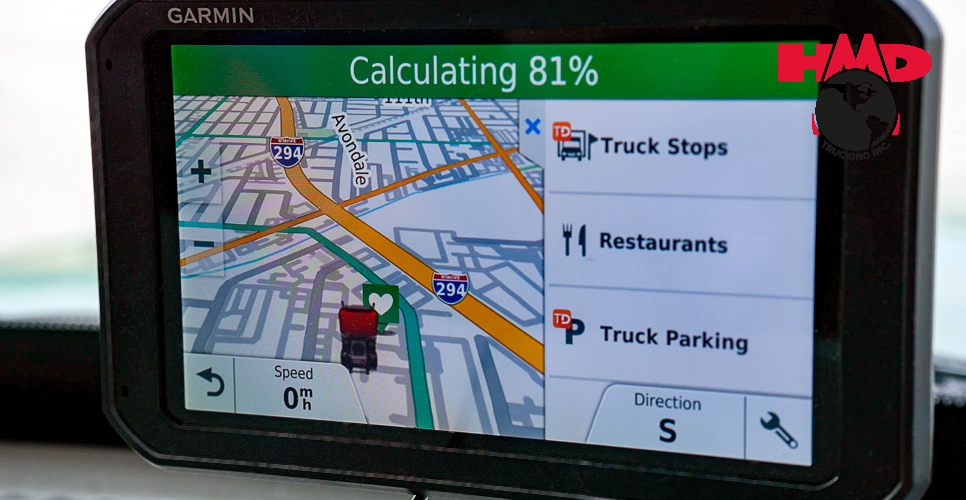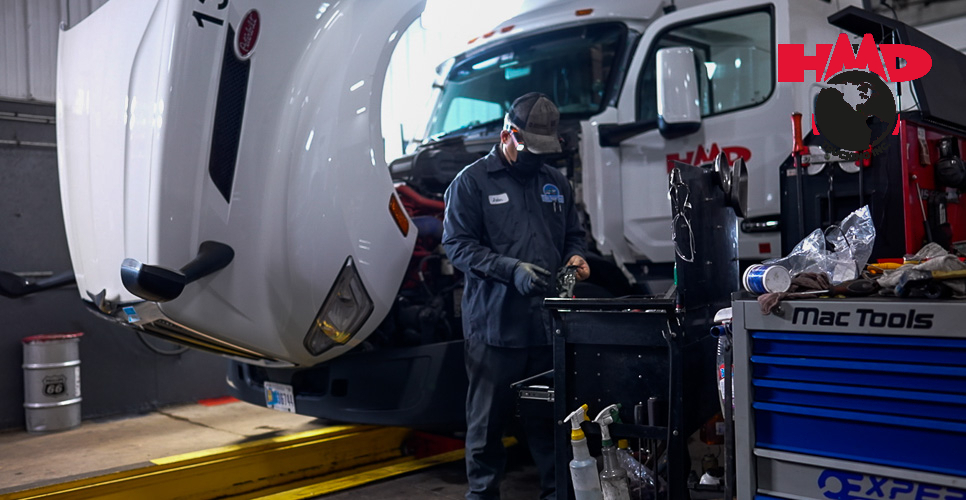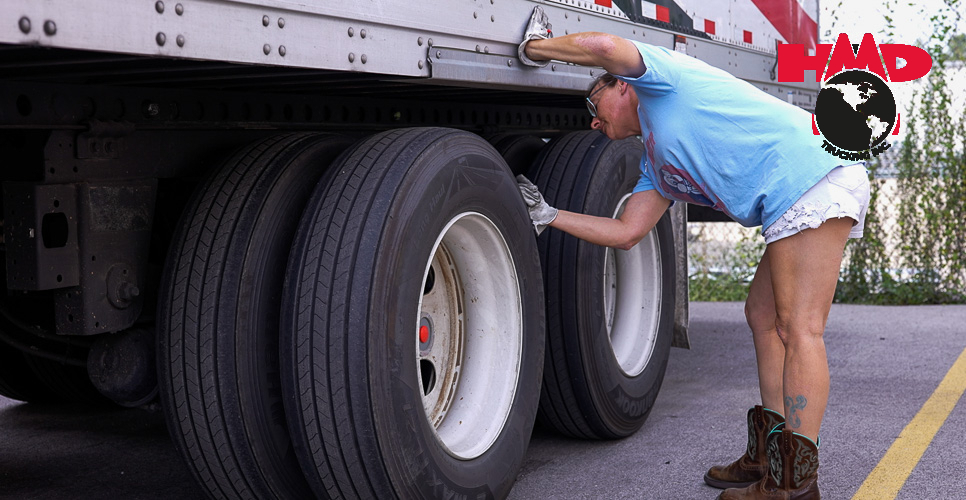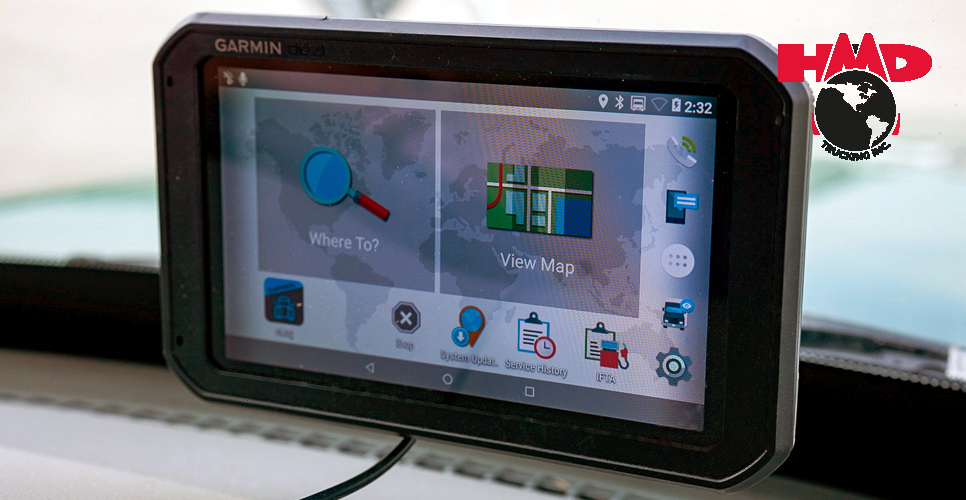Truck driving is a difficult and dangerous occupation that requires nerves made of steel, professional driving skills and caution. We talked to experienced HMD truck drivers and found out what difficulties and dangers can be encountered on the road and what truck driving safety tips there are.
Contents:
Essential Truck Driver Safety Tips
Trucking safety is essential to the health and well-being of drivers, it requires a lot of skill, responsibility and common sense. When going out on the route, the driver can get distracted and make mistakes, some of which can cause serious damage to themselves and others. To prevent this, we are sharing a few useful and practical truck driving safety tips.
Plan Your Trip in Advance
Pre trip planning is important to avoid potential hazards and increase the driver's safety considerably. It is better to worry a little more before you depart, so you have less or no worries at all while you are on the road.
- Be sure to find out any peculiarities of the route beforehand: for example, if you will be running through high-crime areas, plan your stops in safe places and avoid isolated locations.
- Check the weather forecast. In winter, you can come across icy roads or snowdrifts, while in summer, it could be heavy rain or fog. Having timely information about adverse weather conditions gives you a chance to adjust the route or prepare.
- Heavy traffic increases the risk of accidents. Avoid routes with high traffic, or slow down and be careful.
- Avoid driving on narrow local roads unless absolutely necessary to access a location. If you are driving a heavy tractor trailer, find out the weight limits applied on the route. Overweight trucks, that is those having a weight higher than that on the limit signs, have to stop and look for another route.

Defensive Driving
Defensive driving implies strict observance of traffic rules, as well as taking appropriate measures. There are five main strategies of defense.
- When coming out on the main road, be fully confident in the safety of the maneuver and avoid sudden speed accelerations. This is most relevant in wet weather and under icy conditions, when traction is much worse.
- Passing must be done quickly but carefully. Minimum driving time in the oncoming lane, about 12–14 seconds, is a guarantee of safety. Prepare for passing: turn on the left turn signal in advance and make sure that the vehicle behind you did not start passing first. Do not forget that it is prohibited by traffic rules to prevent someone from Passing. A faster vehicle should be given the right of way.
- Keep in mind the blind spot, the part of the surrounding space that is not controlled from the driver's seat. Observing the situation on the road by checking the mirrors every 3–5 seconds and through windows in the direction of movement and side zones will help to stay aware of the situation on the road at all times.
- To ensure your safety on the road. As a general rule you should allow 1 second of distance for every 10 feet of equipment you are driving. This will help allow enough time for braking.
- Keep your hands on the wheel if you have lost control of the truck. In a low traction environment (icy or wet road), shift into neutral to disconnect the powertrain from the wheels or try to downshift, especially if you are going down a steep grade. Steer in the direction that the back of your vehicle is trying to go. In most cases, this is the best way to regain control of the vehicle.

Keep Your Cargo Secure
Vehicles carrying improperly secured cargo jeopardize the safety of drivers, road users and warehouse workers. It can significantly increase the risk of jackknifing and overturning of vehicles, and loss of the cargo in transit.
Along with that, strict observance of commercial driving safety tips for the trucking industry, such as using load locks, air bags, cinch straps and chains, which allow safely stowing, holding and tying loads, can prevent the cargo from shifting and ensure better truck driver safety.

Keeping a Regular Preventative Maintenance Schedule
Keeping a regular preventative maintenance schedule is key to reduce breakdowns and avoid the majority of accidents on the road. Regular maintenance normally includes routinely changing the engine oil and filter, checking other fluid levels, rotation of tires, and cleaning the truck’s exterior.

Pre & Post Trip Inspections
A safety inspection must be completed before and after each trip as required by federal regulations. All commercial drivers keep a service log where they record all pre- and post-trip inspections, and the time when these were done. Apart from saving time and money, and avoiding headaches, this is a matter of trucking safety.
Here is a checklist of safety rules for truck drivers to observe during day-to-day inspections:
- Tires and wheels.
- all fluid levels.
- Electrical systems.
- Brakes.

Avoid Distractions
Factors that can distract the driver and provoke an accident can be divided into external and internal. That is, in addition to the fact that while driving, many of us eat, smoke, chat with passengers and answer calls, drivers are also distracted by what is happening outside: bright advertising boards, an accident, careless pedestrians. Therefore, the driver should always stay focused on driving.
According to the FMCSA Tips for Truck and Bus Drivers, “texting is among the worst driving distractions…and mobile phones must be hands-free and dialed using no more than one button”. For example, when a driver sends or reads a text message, they take their eyes off the road for about five seconds, which is enough to drive the length of a soccer field at a speed of 45-55 mph. This means that truck driver safety largely depends on the driver's own behavior.
Use a Trucking Specific GPS or Mapping Device
A GPS navigator is an essential tool that helps truck drivers to find the best route to their destination.
An important point when using a GPS navigator is voice prompts. When you are on the move, you mostly have to keep your eyes on the road, so voice prompts that tell you when and where to turn can be very helpful.
A mapping device will help in areas of high traffic or if an accident happens in front of you. Then you can look at the map to find alternative routes.

Prepare for Dangerous Road Conditions
Trucking safety tips include dangerous road conditions that can be prevented if drivers simply learn how to deal with them. Approximately 21% of all crashes are weather related, occurring in adverse weather, such as rain, sleet, snow, fog, severe crosswinds, or blowing snow/sand/debris.
For example, rain and puddles make it hard for your tires to maintain traction. Rainy weather driving safety tips include slowing down and leaving enough space between your truck and the vehicle in front of you.
It is recommended to use chains while driving on highways with a lot of snow.
In case you run into an extremely icy road, it is better to stop at the curb and wait until the road is cleared of the ice by maintenance workers.
Heavy fog influences visibility and driver capability, thus increasing accident-related risks. Keep your headlights and low beam on to be visible to other drivers, and reduce speed.
Take Adequate Breaks
HOS (hours of service) regulations have been in place in the U.S. since 1937. In 2017, all drivers and owner operators were obliged to equip their vehicles with an e-log device — an electronic logbook that records every movement of the vehicle, the driver's work time and other parameters established by the rules of transportation.
According to the current FMCSA regulations, a trucker is allowed to drive for no more than eight hours, without taking a 30 minute break.
The working limit during 24 hours should not exceed 14 hours, 11 of these on duty. Only in adverse conditions, such as extreme weather or traffic congestion can the trucker's working day be extended to 16 hours.
The mandatory 10 hours of sleep can be divided into two parts: 8/2 or 7/3. The driver must spend a longer break in the sleeping compartment of the truck, and the second break (of two or three hours), either off duty or in the sleeping compartment. If you start feeling fatigue earlier, it is recommended to stop as soon as possible to avoid an accident.

Invest in a Dash Cam
One useful function of a dash cam is to collect evidence in case of disputes and traffic accidents.
To secure yourself from increased insurance cost, penalties and suspension of your CDL, you should insist that your employer install a quality dash cam.
A good dash cam is not just a surveillance camera: it is equipped with motion and speed sensors, a G-sensor that responds to shocks or sharp braking, and links these specific frames in the video.
Maintain a Space Cushion
Most collisions occur just because of a short space cushion between vehicles. The driver does not have enough time or distance to react when the vehicle in front brakes sharply. Under dangerous road conditions, for example, in the rain, this can lead to a chain reaction and several cars collide in a row. Experts state that the average stopping distance for a loaded tractor-trailer traveling at 55 mph (in ideal conditions) is 196 feet.
Experienced drivers recommend 1 second of stopping distance for every 10 feet of equipment you are driving. To observe this, you can spot an object on the side of the road at the moment when the vehicle in front passes it, and count down your second until you reach the spot: if you pass it faster than the formula, then the distance should be increased. Keeping this distance between you and the vehicle in front of you will allow you to maneuver and stop more easily.
Always keep in mind that you are driving a 72 foot long vehicle with a weight of up to 80,000 pounds, and adjust your speed and space cushion accordingly.

Be Predictable While on the Road
Have you ever seen an aggressive driver speeding in the left lane, who at the very last second dashes into the next lane and further onto the exit from the freeway, cutting off several other vehicles along the way? Be predictable on the road and do not create risky situations like that around you.
Plan your actions in advance and be careful: slow down at turns, do not stop in the middle of the road unless others are expecting you to, do not forget to use your turn signals.
Respect other drivers and give them enough time to maneuver. If you see that the exit from the highway is already so close that there is no time to switch on the turn signals and gently slow down, then forget about it and continue driving until the next exit, then return to your route.

Stay Alert in Work Zones and School Zones
Accidents often occur in work zones and school zones — often severe ones, involving injuries or deaths.
One of the causes of these accidents is the failure of drivers to comply with road signs and warnings. The other reason is speeding.
When driving through work zones or school zones, you should stay alert. Do not get distracted by texts or calls. Always assume that people may suddenly step onto the roadway. Remember that road construction machinery has the right to deviate from traffic rules.
Be prepared for emergency action. In the event of a collision, the law is usually not on the driver's side because there is always a warning sign about roadwork or a school nearby.

Unload Freight Wisely
A truck driver must comply with safety regulations and use common sense while unloading freight.
First of all, if you notice violations of unloading rules by the consignee that can lead to an accident, you should notify the employee responsible for unloading about this.
Apply the brakes and turn off the engine of your truck. Always use wheel chocks. Do not use random objects, such as stones, bricks and so on, instead of chocks, as this can lead to an accident.
Do not permit anyone to perform unloading operations in the maneuvering zone of the truck.
Do not pull out of the dock until the leveler has been removed and you have double checked that unloading is finished.

Lock Your Doors Before Sleep
Always keep your doors locked when you sleep.
Use a device, such as running your seatbelts through the door handles, or use a ratchet strap to hold your doors closed while you sleep, especially in high-crime zones.
Leave your sleeper curtains open if running solo, this way you can see if someone is hiding in there before you get in the truck.
Never walk around behind your truck at night even to do a pre-trip inspection.
Avoid sleeping with your windows or vents open. If you have to park and sleep in a high crime zone, sleep with your head on the passenger side.

Check Out Delivery Locations in Advance
Before the truck arrives at the warehouse of a new customer, experienced drivers recommend coming there on foot and checking out a delivery spot. Unfortunately, this is one of the trucking safety tips that is often neglected.
You should clarify the traffic pattern on the site and carefully inspect the place of loading/unloading. It will take you only 5–10 minutes, but you will be confident in your safety.
Many accidents happen when the truck is moving backwards. Make sure that the docking facility is suitable for your truck, and look around for any obstacles that can obstruct traffic.

Have Tools in Place to Respond to Changes in Road Conditions
Road conditions can be unpredictable, especially for long-haul truckers driving for many days across many regions or states. You never know if something will happen, because there are too many factors that endanger the safety of drivers on the road. The main ones are traffic, when the vehicles are constantly stopping and going, and bad weather.
Always take an emergency tool kit with you to make quick repairs if necessary. The essentials include electrical tape, a socket set, pliers, wire strippers, screw drivers, zip ties, duct tape, an air pressure gauge and combination wrenches.
Do Not Pick Up Hitchhikers
Many trucking companies forbid riders to take hitchhikers of any kind except other company drivers. That is simple common sense for driver safety and freight security.
If you are a solo driver, taking hitchhikers can be potentially dangerous. Consider the probability that someone you pick up on the road may have bad intentions.

Conclusion
Truck drivers should always anticipate dangerous situations and know how to avoid them. Modern vehicles provide maximum comfort and safety for the driver, but the human factor still plays a decisive role. You can also check out our owner truck driver jobs page which we update regularly.
Summarizing all the above, to stay safe on the road, do as follows:
- Plan your trips in advance.
- Keep your truck properly functioning.
- Be careful and respectful to others.
Also, remember that our professional HMD truckers are always ready to share truck driving safety tips with all newcomers.
If you are ready to become a truck driver and start your CDL A job with HMD, fill in the lead form below, so we can contact you.


